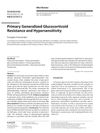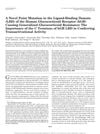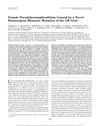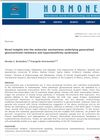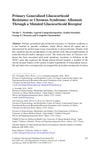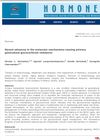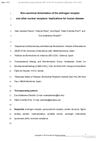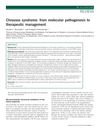Recent Advances in the Molecular Mechanisms Determining Tissue Sensitivity to Glucocorticoids: Novel Mutations, Circadian Rhythm, and Ligand-Induced Repression of the Human Glucocorticoid Receptor
August 2014
in “
BMC Endocrine Disorders
”
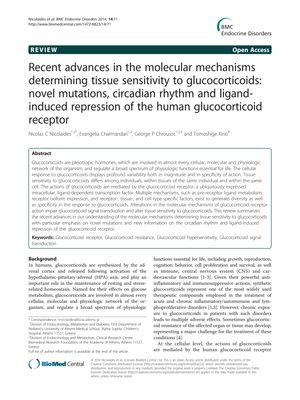
TLDR New findings explain how genetic changes, body clocks, and certain molecules affect tissue response to stress hormones.
The document reviews the molecular mechanisms affecting tissue sensitivity to glucocorticoids, focusing on novel mutations, circadian rhythm, and ligand-induced repression of the human glucocorticoid receptor (hGR). It explains how natural mutations in the hGR gene can lead to conditions like Chrousos syndrome, which causes insensitivity to glucocorticoids. The review also describes how the circadian rhythm, regulated by the central clock system in the hypothalamus, influences cortisol secretion and tissue sensitivity to glucocorticoids, with sensitivity being higher in the evening. It discusses the role of CLOCK protein in suppressing hGR activity through acetylation, and how CRY proteins can inhibit hGR transactivation of glucocorticoid-responsive genes. The document suggests that understanding these mechanisms could help develop new glucocorticoid compounds with selective activities and fewer side effects. It does not include a clinical trial or the number of people in a study.
